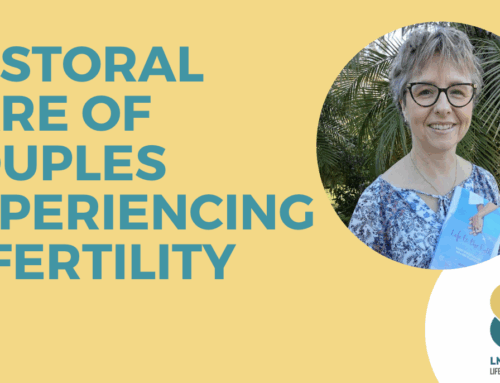Aug 12, 2011
Director – Citizen Professional Center, University of Minnesota
Abstract
This study offers the first research data on the interest of divorcing parents in marital reconciliation. A sample of 2,484 divorcing parents was surveyed after taking required parenting classes. They were asked about whether they believed their marriage could still be saved with hard work, and about their interest in reconciliation services. About 1 in 4 individual parents indicated some belief that their marriage could still be saved, and in about 1 in 9 matched couples both partners did. As for interest in reconciliation services, about 3 in 10 individuals indicated potential interest. In a sub-sample of 329 matched couples, about 1 in 3 couples had one partner interested but not the other, and in 1 in 10 couples both partners were interested in reconciliation services. Findings were consistent across most demographic and marital factors. The only strong predictors of reconciliation interest were gender, with males being more interested than females, and initiator status, with far greater interest among those whose partner initiated the divorce. These findings are discussed in terms of attachment theory and future prospects of divorce services.
Discernment Counseling for Couples Considering Divorce
William Doherty and Steven Harris, University of Minnesota
www.mncouplesonthebrink.org
Context of Therapy with Couples Considering Divorce
The material in this workshop applies to couples who have made a life-long commitment, that is, couples who are married legally or functionally and where one or both are considering divorce.
In most cases, one spouse does not want the divorce while the other is seriously considering it. These “mixed agenda” couples (one leaning out, the other leaning in) are an important subset (an estimated 30% of couples presenting for couples therapy.
Most therapists lack an explicit model or protocol for working with couples in the crisis of the divorce decision. We are each left to make one up on our own.
Our models of couples therapy assume that both people have signed up to do therapy for their marriage, as opposed to having one foot out the door and uncertain about whether to do therapy.
Most therapists seem to assume that when someone files for divorce, it’s time to give up on the marriage and start divorce counseling or mediation.
When someone decides to move forward on the divorce and then shows ambivalence, many counselors and lawyers assume that the person is showing anxiety about what they really need to do.
Conclusion: We lack tailored services for a common, high risk group of couples.
Background to the research
The study: A survey of nearly 2,500 divorcing parents in Hennepin County, Minnesota found that about 3 in 10 individuals thought their marriage could still be saved with hard work and indicated potential interest in reconciliation services. This included 1 in 10 matched couples where both parties were interested and another 30% where one is interested and the other is not. Ref: Doherty, W. J., Willoughby, B. J., & Peterson, B. (2010). Interest in reconciliation among divorcing parents. Family Court Review, 49, 313-321.
New data on attitudes towards the divorce from over 1,200 divorcing individual parents (from parenting classes N = 804), mailed surveys right after filing (N = 296), and collaborative lawyers’ offices (N = 113).
Attitude typology
- I’m done with this marriage; it’s too late now even if my spouse were to make major changes. (66%)
- I have mixed feelings about the divorce; sometimes I think it’s a good idea and sometimes I’m not sure. (17%)
- I would consider reconciling if my spouse got serious about making major changes. (9%)
- I don’t want this divorce, and I would work hard get us back together. (8%)
Among the lawyers’ clients at intake, almost half were in b, c, or d. The results above indicate (only a third in b, c or d) that early intervention potentially yields a greater number of couples prepared to consider reconciliation.
Projects Coming Out of the Research
- The Marital Law Marital Reconciliation Option Project
- Goal: collaborative lawyers opening up the reconciliation option in family law through developing best practices and training lawyers and other divorce professionals.
- Training lawyers to use the attitude typology at intake, engage in a conversation to open up the reconciliation option, and refer to Discernment Counseling if clients are interested.
- The Minnesota Couples on the Brink Project
- Funded by the State of Minnesota through a surcharge in the marriage license fee.
- Goal: to enhance the capacity of professionals to help couples on the brink of divorce who are interested in exploring the option of reconciliation.
- Developing and evaluating Discernment Counseling as a modality.
- Training lawyers, therapists, and clergy.
Common Mistakes with Mixed Agenda Couples: Why We Need a New Approach
- Pursuing the Distancer
- Siding with the Distancer by Not Offering Hope
- Only Working Conjointly
Discernment Counseling
Overview
The goal of discernment counseling is to help couples achieve greater clarity and confidence in their decision-making about divorcing.
The immediate decision is framed not as whether to divorce or stay married forever but whether to continue moving towards divorce or committing to a six month all-out effort to restore the marriage, with divorce off the table for that time period.
A clear distinction is made between discernment counseling and change-oriented marital therapy.
Discernment counseling involves 1-5 sessions working with the couple together and each partner separately. The first session is two hours and the subsequent ones 1.5 or 2 hours.
After establishing, via separate phone calls, where each partner is on the divorce decision and interest in discernment counseling, and doing a domestic violence and coercion screen, the first session begins by exploring three narratives: the divorce narrative (what has gone wrong); the repair narrative (how they have tried to fix things); and a possible reconciliation narrative (six months of all-out effort to see if the marriage can be healthy and good for both of them).
The specifics of the reconciliation narrative are usually explored with each partner individually, since their attitudes towards potential reconciliation generally differ greatly at the outset.
The discernment counselor explores these narratives in order to help the couple see their journey in a more complex way and to see what options then become most compelling. The emphasis is on self-differentiation and self-responsibility and how growing in these areas can contribute to a relationship decision. The counselor respects the reasons for divorce while trying to open up the possibility of restoring the marriage to health. The counselor offers support and understanding along with challenges to narratives that lead to hopelessness, but does not make therapeutic interventions aimed at improving the marriage.
When one spouse wants to stay married and the other is leaning out, the discernment counselor works with the couple together and each partner separately. With the leaning-out partner, the focus is on a decision about whether to divorce now or enter a six month reconciliation period with couples therapy and other help to see if the marriage can become good for both partners.
For the leaning-in partner, the focus is on self-learning and constructive efforts to salvage the marriage. (We ask this spouse to read Michele Weiner-Davis’s book The Divorce Remedy.) In both cases, the emphasis is on understanding one’s own role in the problems and potential solutions, rather than focusing on changing the other.
If the ultimate decision is to try to reconcile, the discernment counselor switches from discernment counseling to beginning a six month course of couples’ therapy and making referrals to additional resources in the community as needed.
The idea is that there is a specific agenda and plan in place before the reconciliation phase begins.
If the ultimate decision is to divorce, the discernment counselor helps the couple connect with lawyers and other divorce professionals who will support them in having a constructive, collaborative divorce. When couples decide to divorce, discernment counseling aims to foster a healthy emotional divorce for the sake of everyone involved.
Structure of Sessions
A key element in this process is to work mainly with spouses separately and to carefully orchestrate the couple conversations at the beginning and end of sessions.
First session: about 40 minutes conjointly to hear their answers to the three narrative questions and get a sense of their couple dynamics, then 30 minutes with the leaning-out partner and 30 minutes with the leaning-in partner, ending with a summary from each about what they are taking from the session (coached in advance by the discernment counselor), and the counselor’s view of their situation and sense of how further discernment counseling sessions might be helpful.
Subsequent sessions: brief check-in with couple together (any major developments since last session and the frame of mind of each about working on the marriage versus divorcing), followed by separate conversations and ending with a check-out similar to the first session.
This process continues until there is a decision on whether to divorce, enter the reconciliation phase, or postpone a decision.
The five-session limit adds intensity to the process and keeps it from edging into couples therapy.
If both partners want to start the reconciliation phase, there is a clear shift in the sessions towards conjoint couples therapy, with period evaluations of whether they are making progress during the six month period of reconciliation.
Minnesota Couples on the Brink Project
Values Statement
What we believe about divorce
- Divorce is usually an attempt to solve a problem that people think can’t be solved in any other way.
- Some divorces are necessary in order to prevent further harm in a destructive relationship.
- Some divorces are ultimately unavoidable because one party decides on divorce despite the wishes of the other party.
- Some people behave destructively enough over a long time that they lose their claim on their spouse’s commitment.
- However, many of today’s divorces could be prevented if both parties took steps to work on their marriage before it’s too late.
- Healthy, life-long marriage has unique value for individuals, families and communities.
- Life-long commitment is especially difficult in today’s throwaway culture.
- Children have an important stake in the health and endurance of their parents’ marriage.
- Unless there is risk and danger, spouses owe each other a careful look at whether their marriage can be restored to health before deciding to divorce.
- Human beings have the capacity to move past anxiety, distrust, and hostility and relate to each other from our highest selves.
- Restoring a marriage must not come at the expense of one of the partners. Love and fairness must go hand in hand.
- Typical marriage counseling available in most communities is not effective enough for many couples on the brink of divorce, especially when they differ on whether to try to save the marriage.
- The key is whether both spouses want to restore the marriage to health. When both spouses devote themselves fully and with proper help to restoring their marriage to health, they can usually make it.
- Healing can also occur through divorce when both partners commit to bringing their best selves to the process.
What we believe about marriage
- Life-long commitment is especially difficult in today’s throwaway culture.
- Healthy, life-long marriage has unique value for individuals, families and communities.
- Children have an important stake in the health and endurance of their parents’ marriage.
- Unless there is risk and danger, spouses owe each other a careful look at whether their marriage can be restored to health before deciding to divorce.
What we believe about healing
- Human beings have the capacity to move past anxiety, distrust, and hostility and relate to each other from our highest selves.
- Restoring a marriage must not come at the expense of one of the partners. Love and fairness must go hand in hand.
- Typical marriage counseling available in most communities is not effective enough for many couples on the brink of divorce, especially when they differ on whether to try to save the marriage.
- The key is whether both spouses want to restore the marriage to health. When both spouses devote themselves fully and with proper help to restoring their marriage to health, they can usually make it.
- Healing can also occur through divorce when both partners commit to bringing their best selves to the process.
Click here for Dr. Doherty’s article in The Washington Post on “Delaying divorce to save marriages: The Second Chances Act” – October 20, 2011
References
Doherty, William J. (2011, November). Treating mixed agenda couples. Psychotherapy Networker, in press for November 2011. Available at www.drbilldoherty.org
Doherty, William J. (2006). Couples on the brink: Stopping the marriage-go-round. Psychotherapy Networker, March/April, 30-39, 70. Available at www.drbilldoherty.org
Doherty, William J. (2002). Bad couples therapy: How to avoid it. Psychotherapy Networker, November-December, pp. 26-33. Available at www.drbilldoherty.org
Doherty, William J. (1995). Soul searching: Why psychotherapy must promote moral responsibility. New York: Basic Books.
Doherty, William J. (2001). Take back your marriage: Sticking together in a world that pulls us apart. New York: Guilford Press.
Weiner-Davis, M. (2002). The divorce remedy. New York: Simon and Schuster.
Video: Working With Couples Considering Divorce. William J. Doherty. American Psychological Association Video Series IV: Relationship. http://www.apa.org/videos/series4.html
Video: Value Sensitive Therapy. William J. Doherty interviewing a woman having an affair and considering ending her marriage. Available from Psychotherapy.Net. http://www.psychotherapy.net/video/value-sensitive-therapyPsychotherapy.Net.
Two-Day Marriage Friendly Therapy Workshop by William J. Doherty: DVDs for 1-2 hour segments available at www.drbilldoherty.org.




